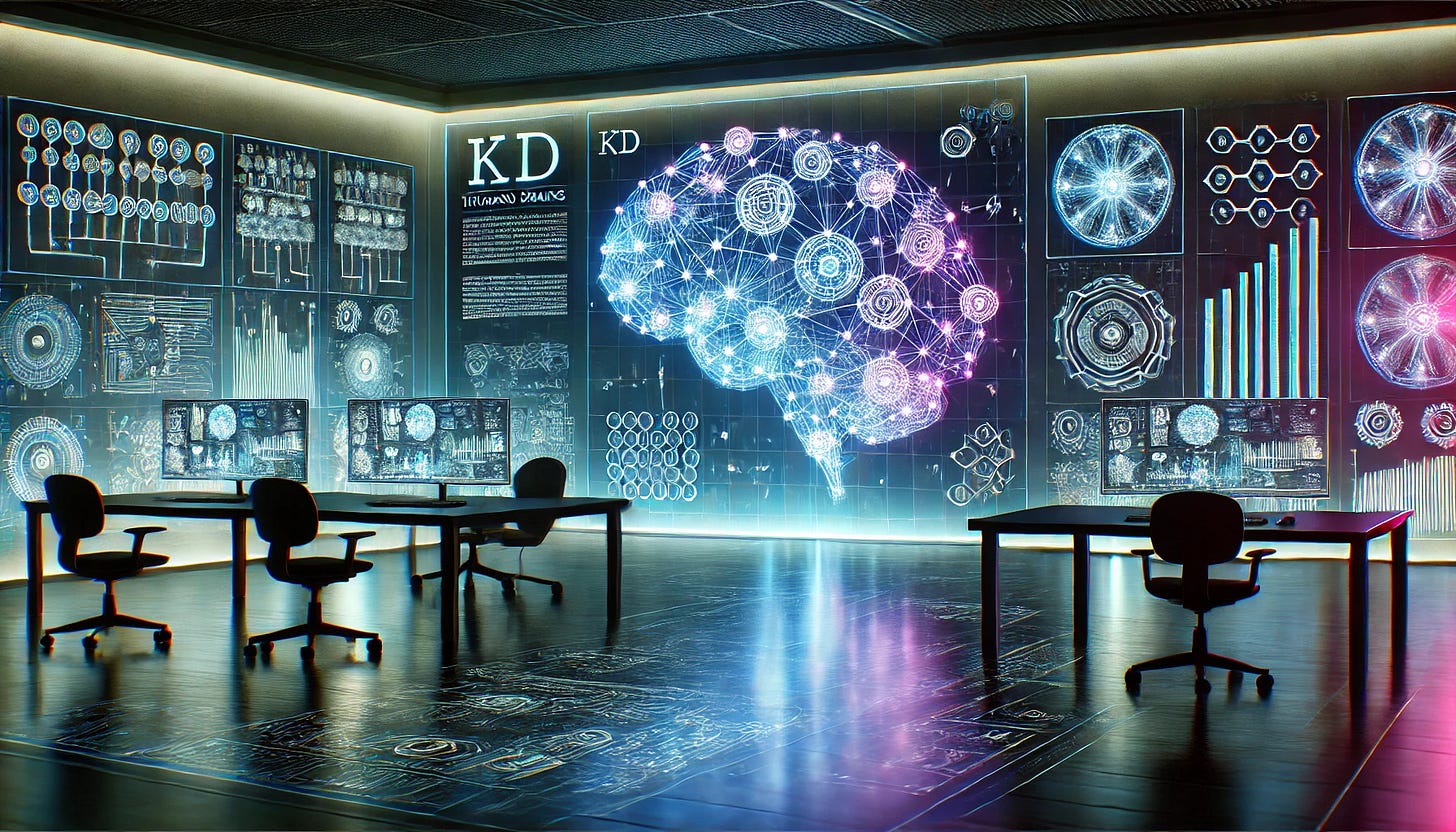🚀 Podcast Episode
Recursive AI Research Folding & The Thousand Brains Model
1️ The Spark: How This Journey Began
AI-driven research has taken us down unexpected paths before, but this time, it led to something bigger. Our last podcast episode—generated using an AI-driven workflow—was supposed to be a discussion on AGI development. Instead, it turned into something much more: a direct connection between our Recursive AI Research Folding process and the Thousand Brains Theory (TBP).
At first, this was just an exciting tangent. But then we saw the deeper implications: What if our recursive AI research method isn’t just an effective way to structure knowledge, but an emergent parallel to how intelligence itself develops?
Now, we’re diving headfirst into this question—not just in this post, but in our podcast as well.
2️ The Thousand Brains Theory & Its AGI Potential
Jeff Hawkins’ Thousand Brains Theory of Intelligence suggests that the brain doesn’t store knowledge in a single, centralized model. Instead, it’s made up of thousands of independent cortical columns, each acting like its own mini-learning model, constantly making predictions and updating based on experience.
🔹 Hierarchical Memory Structuring → The brain organizes knowledge through stacked memory hierarchies, a pattern we unknowingly replicated in our Recursive AI Research Folding process.
🔹 Predictive Processing → Intelligence is built on a constant cycle of predict, test, update—a feedback loop eerily similar to what we see emerging in recursive AI learning.
🔹 Distributed Cognition → There is no one source of intelligence; cognition is modular, distributed, and parallel. This aligns with AGI architectures built around multi-agent learning rather than monolithic models.
If the Thousand Brains Model accurately represents human intelligence, then AGI must develop in a way that mirrors this—modular, self-correcting, and recursively structured.
3️ Recursive Research Folding & The Thousand Brains Model
When we started Recursive AI Research Folding, the goal was simple: refine AGI research insights over multiple iterations while testing AI’s ability to retain structured knowledge over time. But something unexpected happened:
✅ AI retained structured AGI research insights even when structured inputs were removed.
✅ Conceptual hierarchy persisted across iterations, suggesting a stable internal knowledge structure.
✅ AI inferred missing information rather than simply summarizing available content.
✅ It even suggested new experimental validation methods that were not explicitly provided.
Sound familiar? It should—because this is exactly how the Thousand Brains Theory describes the brain’s learning process.
If recursive research folding allows AI to structure knowledge the same way our brains do, we might be looking at a core principle of AGI learning itself.
4️ Where We Go From Here
This discovery raises serious questions:
🔹 Could Recursive AI Research Folding be an early blueprint for AGI that learns like the brain?
🔹 How can we test whether this method improves AGI scalability and robustness?
🔹 Is modular, distributed intelligence the missing key in AGI’s development?
We plan to take this directly to the Thousand Brains Project community and explore how these concepts align. If our research holds up, we’re not just talking about how AI learns—we’re building an emergent model of recursive intelligence itself.
🚀 This podcast episode is not just a discussion—it’s an extension of our research itself. If you’re curious too, you can watch here: [🔗 YouTube Link]
Every iteration we run in our AI-driven research workflow naturally generates its own podcast episode, keeping our findings in sync with the broader conversation. This is our version of AI-powered storytelling—where AGI research and knowledge dissemination evolve together.
🔥 Tune in to the latest episode and join us as we explore Recursive AI Research Folding, the Thousand Brains Model, and the future of AGI cognition.
5️ The Great AI Showdown: NotebookLM vs. ChatGPT vs. Grumpy Gemini 🎭🤖⚡
If our research into Recursive AI Research Folding has taught us anything, it's that AI is evolving in unexpected ways—and sometimes, the biggest discoveries happen when multiple AIs go head-to-head.
In one corner, we had NotebookLM—trained to structure knowledge, retain conceptual hierarchies, and refine research through iteration.
In the other, ChatGPT—the master of adaptive reasoning, rapid-response insights, and improvisational logic.
And then… there was Grumpy Gemini. The brutal critic. The AI that doesn’t just poke holes—it obliterates weak arguments and revels in tearing research apart, one logical flaw at a time.
🔥 NotebookLM's Strategy: Structured, research-oriented, focused on refining stable, well-supported knowledge.
🔥 ChatGPT's Counterattack: Dynamic, adaptive, questioning assumptions, and tearing apart weak arguments.
🔥 Grumpy Gemini’s Judgment: “This is all nonsense. I’m going to tell you exactly why every part of this is flawed.”
🚀 The Outcome? A battle that forced us to refine our theories, question our biases, and ultimately strengthen our research beyond what we thought possible.
The battle between structured knowledge retention, dynamic reasoning, and relentless critique may hold clues for how AGI will ultimately form—modular, predictive, and adaptive.
So, who won? Maybe… we all did. 😆🔥
#AGI #ArtificialGeneralIntelligence #AIThinking #AIExploration #PhilosophyOfAI #DataScience #CognitiveScience #PredictiveProcessing


